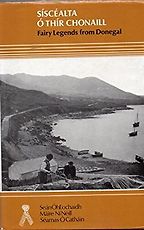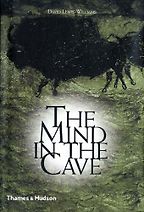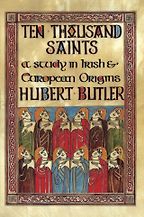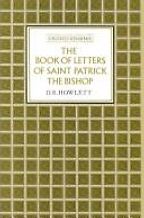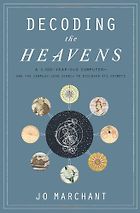The first book on your list is an anthology, Fairy Tales from Donegal.
I’ve had a copy of this book near to hand for over 25 years, and it is a must for anyone wanting to understand the mindset of rural Ireland. It consists of tiny tales told by Irish speakers in Donegal about fairies and magical animals like hares and ghost horses, of how fairy houses could be found at certain moments of the year on the hills, or how a lullaby, or a baby, could be stolen.
The stories were all told as being true, and as having happened just a year or two back. ‘Long ago there was spinning in every house of this parish, and all the old women had the custom of taking the wheel band off at night. If they did not do so they thought the wee folk would be spinning with the wheel until morning. It is always said that it is not right for either man or woman to take the spinning wheel out after nightfall. People know that anyone, man or woman, who does so will be led astray by the fairies.’ Reading this book you can see how country life was dominated by rituals which were designed to appease the “little folk”, the spirits of the place, who would do mischief if the wrong things were done. Probably these beliefs go back to the very beginnings of man’s existence in Ireland.
And the story of how these tales were collected is extraordinary in itself.
Sean O hEochaiadh was a fisherman and self-taught folklorist who recorded these stories over decades from Gaelic-speakers in Donegal. He had a huge Ediphone that he would haul up to people’s homes, often on foot, and then he would coax them to spin their tales which he recorded on wax cylinders, transcribing them later by hand. His persistence, and his deep love of his County and its inhabitants, have preserved for us what is in effect a core-sample of the history of Irish beliefs and language, and there is little doubt that without him much of it would have been lost.
I’m intrigued by your choice of David Lewis-Williams’ The Mind in the Cave. Isn’t this about the origins of cave art?
This book has been my constant companion as I have tried to understand Ireland’s prehistory. Lewis-Williams offers a bold new framework for interpreting Stone Age concepts of the universe. He describes very convincingly how these were heavily influenced and defined by the trance experiences of shamans, which seemed to show that there were many levels of spirits which could be contacted and which had to be appeased or appealed to for the sake of the tribe’s prosperity. Caves played a vital role in this story, as people would go into them to hallucinate, believing that they were passing through the cave walls into other spirit worlds and dimensions, and could then return to describe what they had seen. Such phenomena as the cave paintings in France and Spain resulted from these, and it is fascinating to see that the same things were believed to be happening in Ireland. Ritual and legend was centred around natural caves like Oweynagat, where the ancients believed they had an access point for Other World spirits, and also in artificial structures like Newgrange, which is older than Stonehenge or the Great Pyramid of Giza. By building Newgrange to align with the passage of the sun at the winter solstice, Neolithic farmers kept the sky goddess Boinn trapped, and allowed her to be penetrated by their very male sun god once a year.
Five Books interviews are expensive to produce. If you're enjoying this interview, please support us by donating a small amount.
So it’s more about structures of belief than about the cave paintings themselves?
Yes, and also about how our spiritual rites may be, to some extent, determined by the structure of the brain, hence the persistence and resilience of common threads in rituals across continents and through layers of history.
So then this idea is further supported by your third choice.
Exactly – Butler’s Ten Thousand Saints. This is a wonderfully scholarly and yet irreverent book which pokes fun at every aspect of Irish notions of sanctity, and includes detailed descriptions of the activities of St Patrick’s sister, St Lupita. Butler writes, ‘Perhaps because Lupita’s name recalls lupanar (a brothel) and lupanus (lewd) in Latin, or maybe because lupait means a little pig in Irish, she was very careless with her reputation.’ Lupita had a flock of illegitimate children sired by three other Irish saints, and was finally caught in flagrante with one of them by her brother, who was so cross that he drove over her three times in his chariot, with the result that she died, and in spite of her waywardness was immediately allowed into heaven while Patrick was singing her requiem over her dead body. St Patrick then said that her descendants would be allowed into heaven too, but they would all be sickly. Butler however has a serious point, showing that most of the myriads of oddly named and eccentrically behaved Irish saints are in fact mythical tribal ancestors or local gods. They were turned into saints to facilitate the Christianisation of the country in the fifth and sixth centuries.
Your fourth choice is another tangential one: what led you to include the story of the Antikythera Mechanism?
Although on the surface this book has nothing directly to do with Ireland, I came across the story while researching ancient methods of timekeeping and star-gazing for a book on Irish round towers. The book is about several weird unattractive corroded lumps of metal that was hauled out of the sea in 1901 off the coast of a small Greek island, and which have been puzzling archaeologists, physicists, engineers and astronomers ever since. These fragments turn out to have been parts of an extraordinarily complex and ingenious mechanical computer of about 300 BC which could calculate the positions of the planets, the sun and the moon at any moment in the past, present or future, as well as all eclipses, both solar and lunar, and relate them to one of the Greek calendars that was in use at the time. It was worked by an elaborately arranged series of cogged wheels which moved dials and pointers on the back and front faces of the mechanism. Nothing of this degree of mechanical sophistication was known to exist before the development of clockwork in the Middle Ages. I have been fascinated by this since I first heard about it: Marchant’s book demonstrates how slight is our understanding of the knowledge and the science that existed in the Greek world, before the Romans smashed it up, and is by extrapolation a useful reminder for anyone interested in early history of how little we really know about the knowledge of the ancients.
So it serves as further context for several themes you’ve touched on already: the complexity of ancient cultures, and the dangers of making historical assumptions.
Precisely. The 6th and 7th century monks who built the round towers in Ireland were incredibly sophisticated in their understanding of the movements of the heavens, and yet we have almost no definite information on the purpose behind the towers’ design. Theories run the gamut: refuges, memorials, bell towers, even, hilariously, early medieval radio antennae. But it is the lack of a simple answer that in itself gives us some inkling: they were built following a complex theory, and it is one into which, for all our supposed sophistication, we lack any insight.
And finally, we come to a figure so entwined in perceptions of Ireland…
Saint Patrick lived more or less in the fifth century; he may have been born in the fourth. None of his dates are certain, and in fact, there are few unassailable truths in our knowledge of his life. The most extraordinary fact about him is that there are two genuine documents by him; these are really remarkable, because they are the only documents to have survived at all from that century in Ireland. The classicist D R Howlett’s edition of The Letters is an erudite and detailed analysis, but they are nonetheless totally perplexing, because they tell us almost nothing we want or expect to hear, and everything they do tell us leaves us with more unanswerable questions than we had in the first place. It seems, from what he himself wrote, that Patrick had infuriated the Romano-British authorities who had sent him to Ireland, and that they tried very hard to get rid of him, in the first instance by accusing him of blasphemy, heresy, pagan practices, misappropriation of church funds and disobeying orders. I suspect they intended to defrock him, and when their accusations did not work they resorted to a second plan of attack, and sent a force of soldiers to smash up a ceremony at which he was giving an entire tribe in the far north of Ireland the sacraments of baptism, confirmation, and communion, thus turning them into Christians. The Romano-British troops descended on the tribal capital, killed many of the tribesmen, took their wives and gold for themselves, and sold the survivors as slaves to a pagan tribe in Scotland. It would be hard to imagine a more definite statement of establishment disapproval than that, and it’s tragically apt that Irish Christianity should start with the same sort of internecine warfare as it has gone on enjoying ever since.
Get the weekly Five Books newsletter
And we are left with more myth and uncertainty.
Yes but Saint Patrick’s cultural iconography gives us a heroic figure, a protector, a rebel and an idealist, an educated man with a strong creed and a flair for the dramatic. Does he play a less or more important role, culturally, because the tales of his life are open to interpretation? His legend embodies the grey area between actuality and allegory that takes over where history has holes.
Five Books aims to keep its book recommendations and interviews up to date. If you are the interviewee and would like to update your choice of books (or even just what you say about them) please email us at [email protected]
